Whenever there is a need to effectively manage water within the household, one can always count on the submersible pumps.
When wanting to withdraw water from a well, for example, or drain water from the basement, one may find themselves forced to utilize the aforementioned machines.
In this review, submersible pumps will be sought to be made comprehensible. Their use, types and important factors will also be discussed in this paper.
With the exact details you need, you will obviously be prepared to undertake any water operation that will be brought your way.
Learn More:
- Tips for Choosing the Best Submersible Pump for Your Waterworks Needs
- How to Choose High-Efficiency Submersible Pumps
- Choosing the Right Submersible Pump for Waterworks
Common Uses of Submersible Pumps
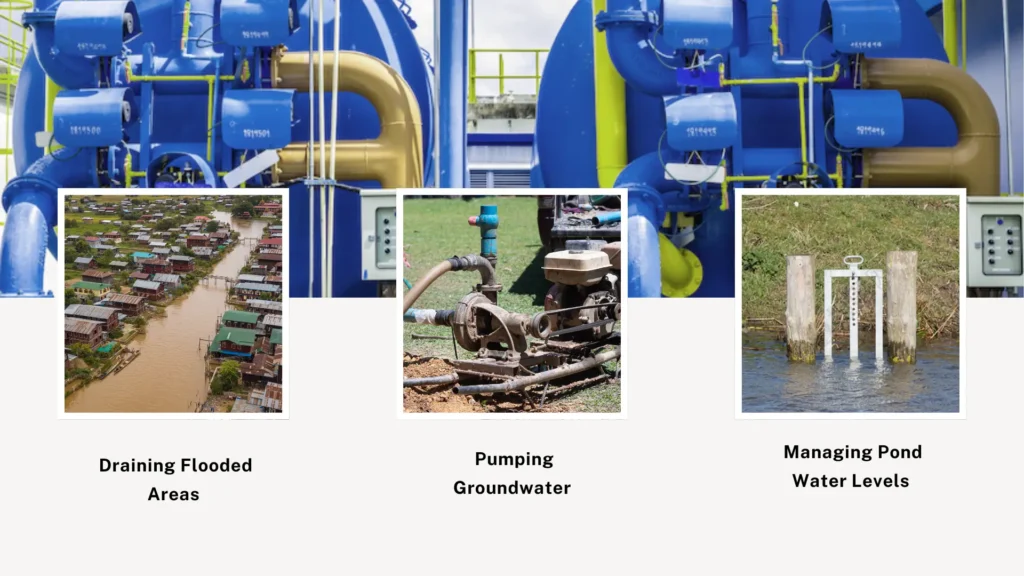
Submersible pumps have an extensive scope in the industry and provide value in all situations since they can be used in the planning of urban areas as well as the constructional phase.
This range of uses includes water pumps that are designed to operate under the given height as well as those that can be found in irrigation wells.
These are some of them:
Draining Flooded Areas
The use of submersible pumps is essential for the prompt evacuation of water in cases of a flooded keepsafe as in the case of drenched basements, garages, or even workstations.
In the aftermath of flooding it is possible that this type of construction aspect will still be soaked, or the rain or faulty pipework will result in a spill which requires victims to be rushed.
They are tough, able to absorb even the vast amounts of water and consequently can work non stop until the area is totally clean.
This is usually the case in intensively flooded buildings or sites where inflow of flood water must temporarily be stopped or reduced for every fraction of an hour without forming cracks.
The fact that in most cases submersible pumps are portable enables, either at the household or contracting level, easy transfer and use anywhere in the area that is in danger of the water.
Pumping Groundwater
The groundwater pumping systems are some the most proficient with respect to groundwater extraction which makes them of immense help to homeowners in rural areas, or areas where there is agriculture being practiced.
These pumps can operate from wells or below the ground surface by raising water, for purposes of irrigation, for animals or housing needs.
Its use in farming assists in watering of crops since it is very hard to effect surface irrigation in the area.
For residents who enjoy the lushlook garden, and the flowers, and lawns they hold dear, the use of wells for lifting water levels of submersible pumps, is very helpful.
In addition to that one can enhance the use of rain peting also by decentralizing water management through other domestic uses that do not include drinking water.
Managing Pond Water Levels
Submersible pumps are at the core of maintaining the water level in ponds, for both aesthetic and ecological purposes.
They can support a uniform water level in ornamental ponds, maintain an attractive environment, and ensure the well-being of aquatic organisms within.
They remove extra water at the time of heavy rain and add water when it does not rain for some time, to avoid overflow and stagnation.
It maintains appropriate water levels necessary for the health of the fish, plants, and other aquatic organisms by encouraging oxygenation and preventing the growth of harmful algae.
Submersible pumps also work in water circulation to improve filtration and clarity and ensure a healthy ecosystem for backyard ponds or larger bodies of water.
Types of Submersible Pumps
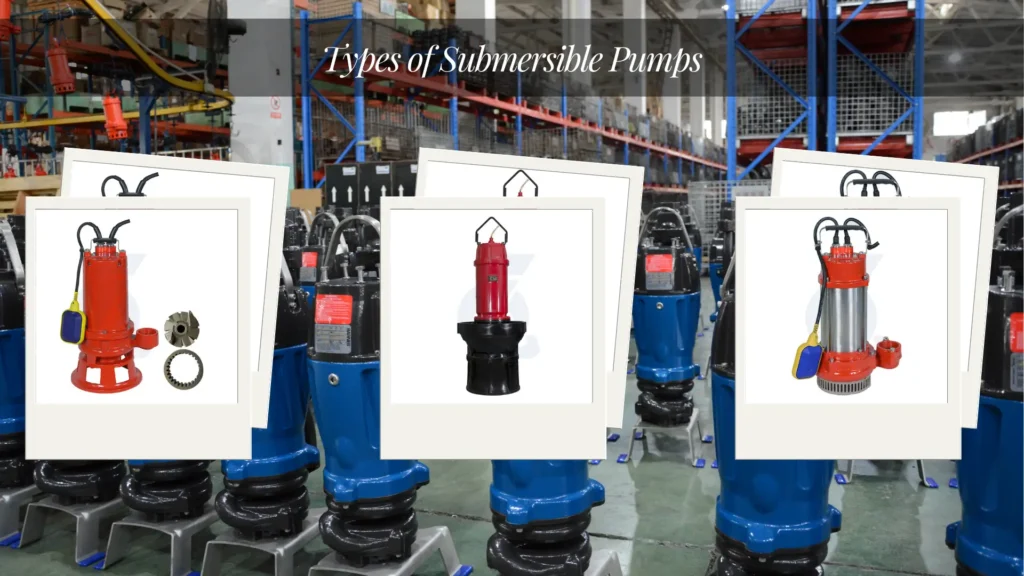
Sewage Pumps
They can handle solids and debris; therefore, they are vital in homes with basements or septic systems.
They are designed to operate under harsh conditions and mostly have grinders that shred the wastes into small pieces.
Clean Water Pumps
Clean water pumps apply to clear water applications.
They are also good in draining swimming pools, fountains, or aquariums.
They normally have a higher flow rate and are designed for handling non-corrosive liquids only.
Well Pumps
Submersible well pumps draw water out of the deep underground area.
They are quite an effective option for well-water-dependent homes, offering a continuous and dependable water supply.
The majority of these pumps are placed at the bottom of the well and can pull water from remarkable depths.
Sump Pumps
Sump pumps prevent water from flooding into the basement.
They are typically installed in a sump pit and automatically activate once the water rises, thus keeping your basement dry and your home safe from any water damage.
Key Features to Consider
Horsepower
Horsepower rating of a pump is one of the most important factors as it defines the capacity and efficiency.
Higher horsepower pumps can relocate more water per minute at higher speeds, which can handle heavy tasks, while smaller horsepower pumps are ideal for lighter applications.
Carefully assess your needs to choose the right horsepower.
Flow Rate

The flow rate describes the quantity of water that is moved by a pump in a minute, denoted by GPM.
Based on your particular needs, be it in the draining of a flooded area or irrigation water supply, you will need to opt for an appropriate flow rate to meet your demands.
Maximum Head
The maximum head refers to the highest vertical distance a pump can push water.
Knowing your specific height requirement is essential for effective operation.
If the pump cannot reach the desired height, it won’t function properly, so calculate the vertical distance from the pump’s location to the discharge point.
Material Quality
The material a submersible pump is constructed from determines its longevity, with high-quality thermoplastic or stainless steel used because of its resistance to wear and tear and corrosion.
These materials will ensure a continuous performance of the pump in different environments over long periods.
Energy Efficiency
Understanding Energy Ratings
When buying a submersible pump, check its energy efficiency ratings.
Those designed to use less energy when operating can greatly reduce your electricity bills while still delivering performance.
Energy-Efficient Pump Benefits
Energy-efficient models are not only economically friendly but also eco-friendly.
They consume less energy, hence giving your carbon footprint a break.
Therefore, energy-efficient pumps are an intelligent choice.
Long-Term Savings
With this, investing in a suitable energy-efficient submersible pump will pay off substantially in the long run.
Though a bit more costly at first, the saving on energy bills and maintenance costs will return decent investment particularly if used on a regular basis.
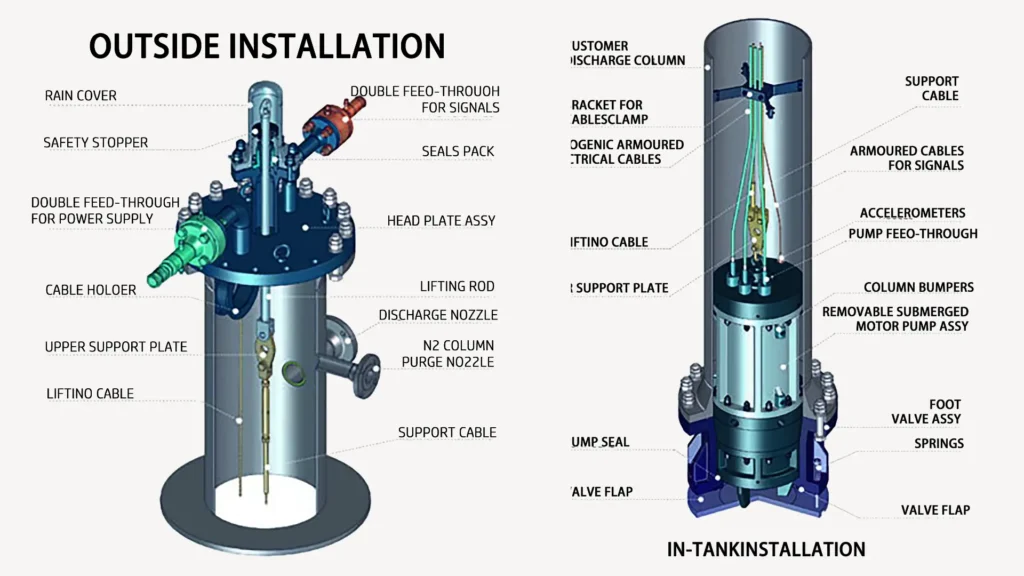
Installation Considerations
DIY vs. Professional Installation
While making a choice in favor of a householder who is an expert in construction or household systems and particularly with installations, one should assess the level of one’s plumbing and electrical skills.
Setting the pump up with a procedure involves pros about preparedness and effectiveness of installation, till the reparations cost of a service provider, can immediately outweigh as compared to DIY installations.
Tools and Equipment Needed
Should you prefer to carry out the setup yourself, then go ahead and collect all the necessary spanners, screwdrivers, and protective equipment.
There will be little to no inconveniences during the installation process if you have the right tools.
Safety Precautions
Wherever applicable, which is also very important especially for the pump fixations below the water level, you should not take anything for granted, especially the electricity wiring as you complete the installation.
Please follow all the safety instructions provided by the manufacturer.
Make sure everyone around is wearing the proper gear and work in a clean and dry environment to avoid any accidents from happening.
Maintenance Tips
Regular Inspections
Conduct regular inspections of your submersible pump to check for signs of wear and tear.
Early detection of issues can prevent costly repairs and ensure that your pump continues to operate efficiently.
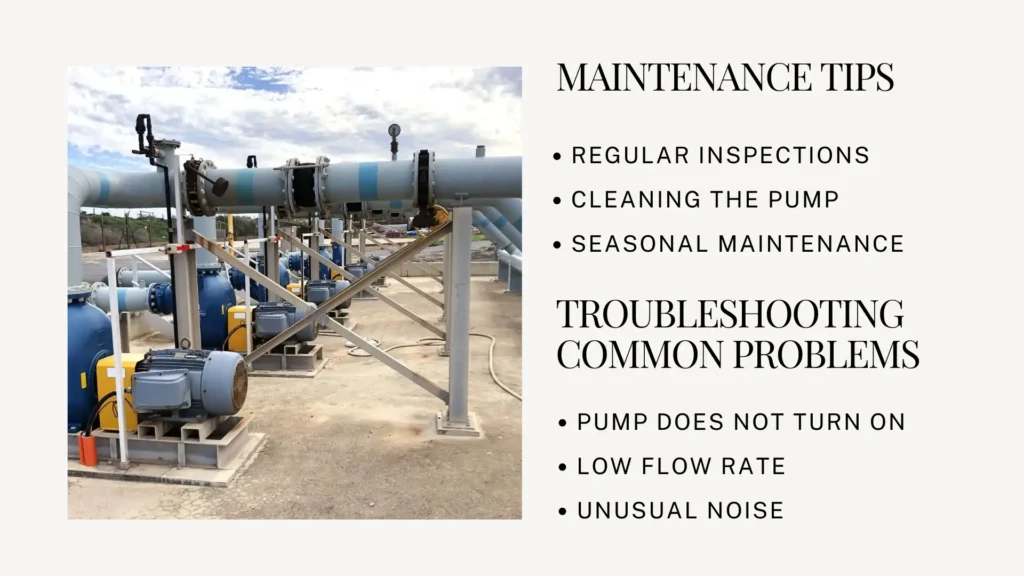
Cleaning the Pump
Keep the pump clean for proper functioning.
The debris and sediment that might build up around the intake and discharge areas should be cleared off, as these can cause blockages and thereby reduce efficiency.
Seasonal Maintenance
Check the seals and connections on a seasonal basis in preparation for heavy usage during rainy months or after a period of dormancy.
This proactive move keeps the pump’s reliability intact while also extending its lifespan.
Troubleshooting Common Problems
Pump Does not Turn On
If your submersible pump does not turn on, check the power supply.
First, ensure that it is plugged into a live outlet, and then test any circuit breakers or fuses for proper functioning.
Some of the time, it just needs to be reset.
Low Flow Rate
A reduced flow rate is a sign of possible blockages within the intake or discharge pipes.
Check these areas for obstruction and clean them for the free flow of the substance.
Unusual Noise
Strange noises from the pump are a good indication of mechanical problems.
Grinding, rattling, and other strange noises mean you should immediately shut the pump off and seek the cause to avoid further damage.
Cost Considerations
Initial Purchase Price

The initial purchase price of a submersible pump will vary depending on the type and brand, and should always be considered within the context of your budget.
The best balance will involve weighing your needs against what you can afford.
A pump may be more expensive but guarantees good performance and durability, but only if it will meet your specific requirements.
Operating Costs Over Time
You need to consider long-term operating costs like energy consumption and maintenance.
An initially cheap pump might be very costly in the long run if it is less efficient or needs to be repaired often.
Understand the total cost of ownership by determining the expected life and efficiency ratings.
Warranty and Support
Look for pumps that have a warranty and are backed up by good customer support.
A good warranty will provide peace of mind and help protect your investment.
Likewise, good customer support is indispensable for troubleshooting and maintenance advice to get the most from your purchase.
Environmental Impact
Eco-Friendly Options
Consider submersible pumps made to be energy-efficient with the least environmental effects possible.
Most are now producing eco-friendly models that use less energy and have components that could be recycled.
By choosing these options, one is reducing one’s ecological footprint and may help further other sustainability efforts in one’s community.
Conserving Water
Using the right pump can help reduce water waste, especially in irrigation applications.
Efficient pumps ensure that water is used effectively, promoting sustainable practices.
By minimizing overflow and optimizing usage, homeowners can contribute to better water conservation efforts.
Contribution to Water Conservation
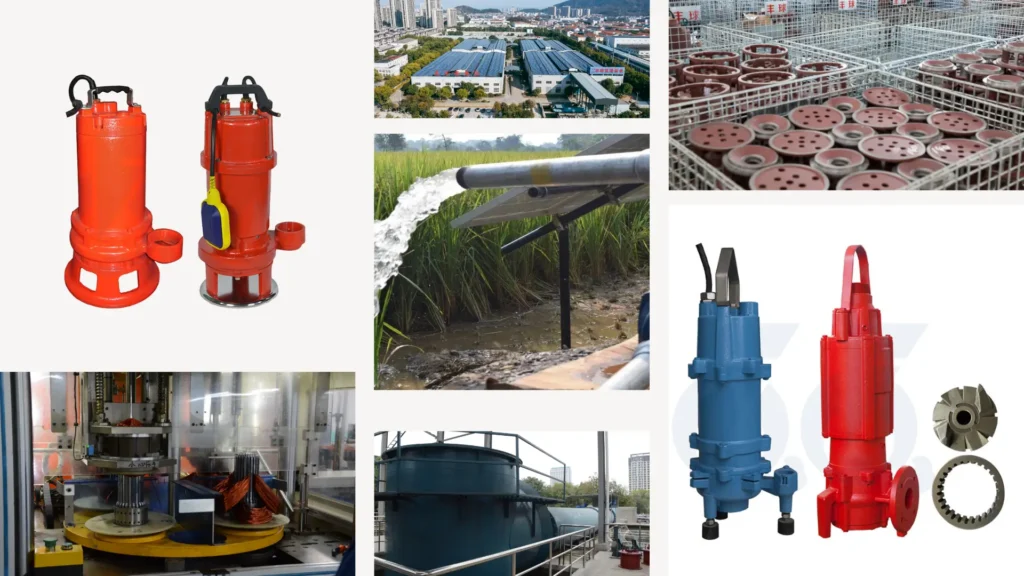
Because of this, by using the appropriate submersible pump, you conserve water-a philosophy that is needed in this changing climate.
Conserving water makes much sense in helping preserve this resource.
By making informed choices, you can help show the way to more responsible consumption practices.
Conclusion
The selection of a suitable submersible pump for a residential setting does not have to be complex.
Knowing what kind of pumps exist, their characteristics, and the maintenance required can enable you to choose a pump that can work for you effectively.
Whether you have flooding problems, want a dependable water supply, or take care of your garden pond, the right submersible pump will make life so much easier for you and make your house a lot safer.
Making an informed choice now saves hours of wasted time, money, and hassle in the long run.

